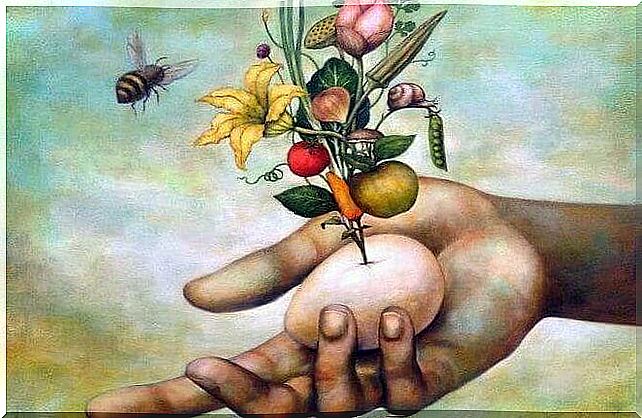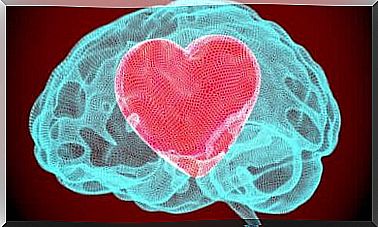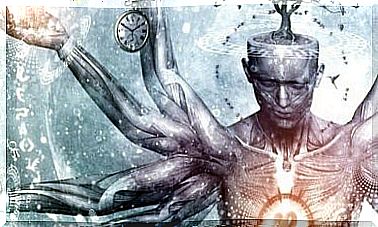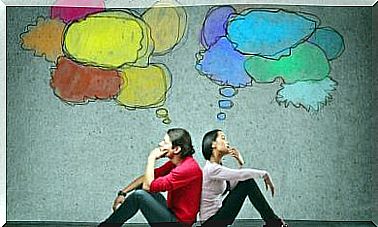Inner Disconnect: When We Neglect Our Emotions

Inner disconnect is a defense mechanism that many people use. It is choosing not to feel so as not to suffer, it is “cooling” the heart to protect the soul from new failures, new disappointments and wounds that do not heal. However, with this strategy we are only able to move away from a healthy participation in life.
Analyze for a moment what the purpose of our emotions is. Each time they are activated in the brain, they trigger reactions throughout our bodies. Disgust, for example, drives us away from something or someone. Affection, enthusiasm, affection or passion connects us and injects us with a wealth of dynamics that make us more energized and creative than ever.
However, anyone who thinks that negative emotions have no purpose or that their only purpose is to bring us unhappiness is completely wrong. In fact, they are what allow human beings to adapt, learn and progress throughout their evolution and life cycle. Fear or anxiety are survival mechanisms, warning signs that we need to know how to interpret in order to translate them into adaptive responses that guarantee our integrity.
From neuroscience, and through interesting books such as “A New View of Pain as a Principle of Homeostatic Emotion”, we arrive at a very revealing explanation: modern man is very afraid. Despite the lack of external predators or concrete physical hazards, the fear of this modern world is much deeper and more complicated.
We talk about inner fears, those personal demons that paralyze us, take our air, and that no doubt have multiple sources. Given our inability to manage these fears, we often choose to use the emotional disconnect syndrome.
Let’s take a moment to reflect on this concept that, perhaps for you, is well known.

The Inner Disconnect Syndrome: A Very Common Defense Mechanism
Let’s imagine for a moment a fictional person named Miguel. This young man has an affective past marked by many failures. His level of disappointment is so deep that he started a new stage in his life where he reduced the degree of emotional involvement to a minimum; you don’t want to suffer again or experience more disappointments, more disappointments.
Its defense mechanisms to achieve this goal are very attentive: it started a complex dissociation between thoughts and emotions to the point of “intellectualizing” any fact. In this way, he protects his emotional isolation with thoughts like this: “I’m happy alone, I think love is a waste of time and something that interferes with my professional future”.
Miguel developed what is known as the Inner Disconnection Syndrome to forget the disappointments of the past, thus ensuring that they will never happen again. However, this behavior will not help him at all: in addition to isolating himself and not participating in life in a healthy way, our protagonist is sinking into the same emotional emptiness he wanted to protect himself from.

The Effects of Emotional Disconnection
If for Miguel to love is to suffer, closing the doors to love transfers the same suffering to all areas of his life. Emotional disconnection is a relentless virus that slowly advances, conquering various territories, because the person who experiences it stops internally registering love and affection as something significant in life.
Little by little, frustration, biting bitterness, relentless bad mood and emotional suffering set in and, sooner or later, result in physical pain, insomnia, and various illnesses such as depression.
Living connected to our emotions: a daily lifesaver
We were talking at the beginning of the article about the weight of negative emotions in our lives: we define them as survival mechanisms. However, as we can see in the previous example, many of us, instead of trying to understand them, we anchor them in our mental boats to submerge them in the void of indifference; of forgetting.
Choosing not to feel in order not to suffer makes no sense. It doesn’t make sense because the human being, however much we are told, is not a rational entity or a computer. The human being is a set of fabulous emotions that guide you and give you life to connect with each other, to learn from the disappointments, to mourn the losses, laugh with happiness and advance with your head held high to overcome these dangers with the which we always get some lesson from.

Neuroscience tells us that the inner disconnect that arises from a set of negative emotions is not helpful or healthy. Negative emotions, such as fear or disgust, have a purpose and shape what scientists call a “homeostatic drive.” Human beings were designed to act, not to be isolated in their islands of dissatisfaction.
When our inner balance is disturbed, it is a good idea to gather strength, be creative and courageous to regain this inner homeostasis; that way, we will reach emotional fulfillment or that perfect spot where nothing hurts and nothing is missing. Allow yourself to “feel” again to connect with yourself first and then dare to connect with those around you.
In conclusion, our brain is a wonderful social and emotional entity that needs others to be well, to be at peace and to have the necessary balance. So let’s take care of our emotions.









